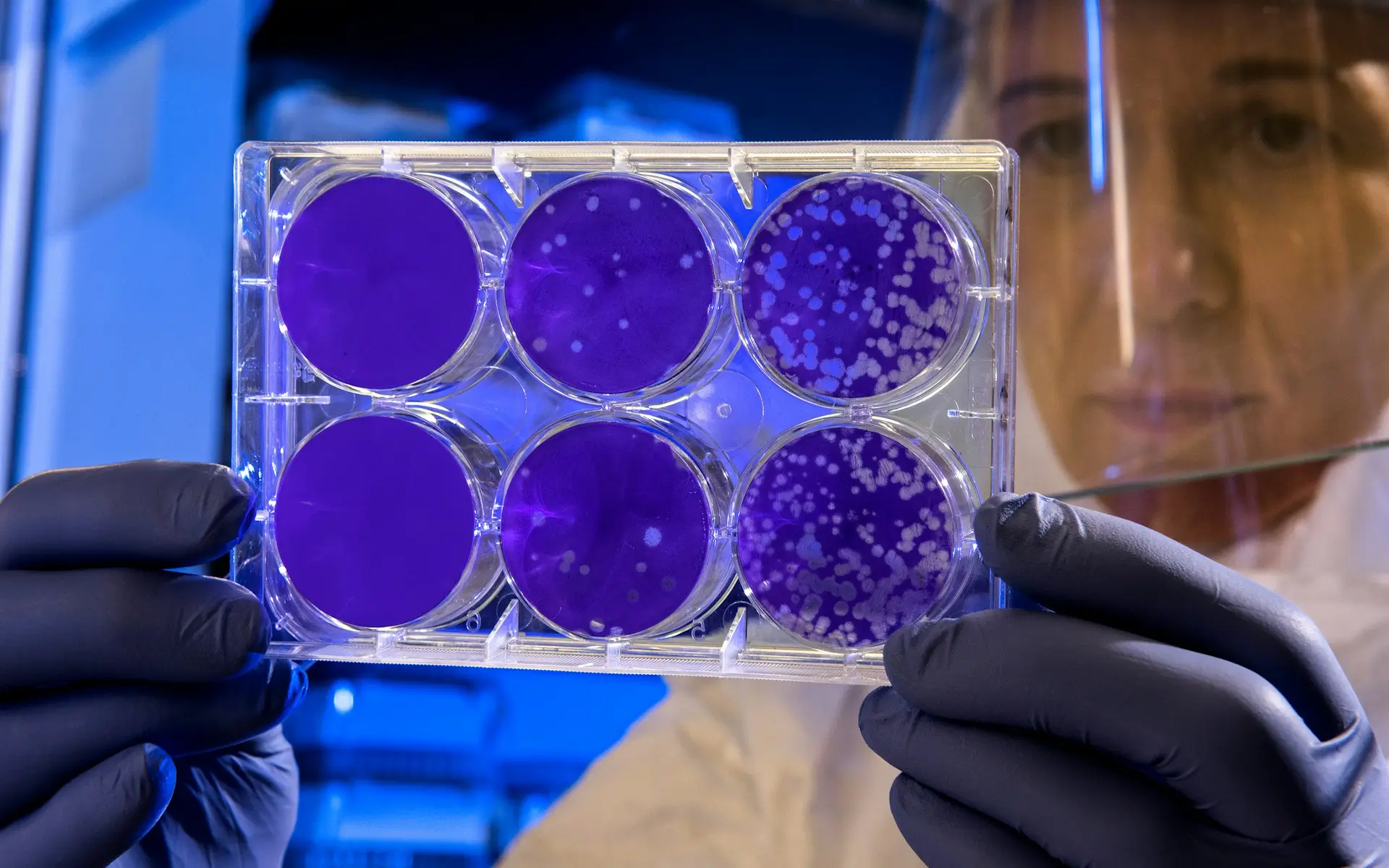Addressing Life-Threatening Diseases
Sepsis is the leading cause of death globally, affecting 49 million people, resulting in 11 million deaths each year.





Sepsis
Sepsis
Sepsis
Leading Cause of Death Globally: 11 Million People Annually
Leading Cause of Death Globally: 11 Million People Annually
Leading Cause of Death Globally: 11 Million People Annually
Economic Burden on Healthcare System: $62 billion annually
Economic Burden on Healthcare System: $62 billion annually
Economic Burden on Healthcare System: $62 billion annually
Lack of Approved Therapeutic Interventions
Lack of Approved Therapeutic Interventions
Lack of Approved Therapeutic Interventions
The Impact
The Impact
The Impact
"...In 2017, an estimated 48.9 million (95% uncertainty interval [UI] 38.9-62.9) incident cases of sepsis were recorded worldwide and 11.0 million (10.1-12.0) sepsis-related deaths were reported, representing 19.7% (18.2-21.4) of all global deaths."
The Lancet
Peer-reviewed Medical Journal
"...In 2017, an estimated 48.9 million (95% uncertainty interval [UI] 38.9-62.9) incident cases of sepsis were recorded worldwide and 11.0 million (10.1-12.0) sepsis-related deaths were reported, representing 19.7% (18.2-21.4) of all global deaths."
The Lancet
Peer-reviewed Medical Journal
"...In 2017, an estimated 48.9 million (95% uncertainty interval [UI] 38.9-62.9) incident cases of sepsis were recorded worldwide and 11.0 million (10.1-12.0) sepsis-related deaths were reported, representing 19.7% (18.2-21.4) of all global deaths."
The Lancet
Peer-reviewed Medical Journal
In-hospital, mortality for patients with Sepsis & SA-AKI has recently been estimated around 30%, while critically ill patients with dialysis-requiring AKI experience mortality rates can excess to 60%. Despite efforts to develop new therapeutic modalities, current therapeutic options are very limited.
AKI affects almost 4 million people in the United States with an annual cost of up to $24.0 billion.
AKI affects almost 4 million people in the United States with an annual cost of up to $24.0 billion.
AKI affects almost 4 million people in the United States with an annual cost of up to $24.0 billion.
The most expensive patients are those with AKI of sufficient severity to require dialysis
The most expensive patients are those with AKI of sufficient severity to require dialysis
The most expensive patients are those with AKI of sufficient severity to require dialysis
Cost increases relative to patients without AKI and can reach up to $42,000 per hospitalization event
Cost increases relative to patients without AKI and can reach up to $42,000 per hospitalization event
Cost increases relative to patients without AKI and can reach up to $42,000 per hospitalization event
Our Solution: Target Galectin-3 with XGal-3®
Our Solution: Target Galectin-3 with XGal-3®
Our Solution: Target Galectin-3 with XGal-3®
What is Gal-3?
Our solution
How it works

The Overlooked Protein Fueling Some of the Deadliest Diseases
Galectin-3 (Gal-3) is a protein made by the body in response to stress, injury, and aging. In healthy amounts, it plays a normal role in cell repair.

But when Gal-3 levels rise too high, they trigger a cascade of harmful inflammation—and are now linked to some of the most dangerous conditions in medicine such as sepsis, kidney disease, fibrosis, & cancer progression.
Over 10,000 peer-reviewed studies have identified Gal-3 as a key driver of disease—and until now, there’s been no effective way to remove it.
What is Gal-3?
Our solution
How it works

The Overlooked Protein Fueling Some of the Deadliest Diseases
Galectin-3 (Gal-3) is a protein made by the body in response to stress, injury, and aging. In healthy amounts, it plays a normal role in cell repair.

But when Gal-3 levels rise too high, they trigger a cascade of harmful inflammation—and are now linked to some of the most dangerous conditions in medicine such as sepsis, kidney disease, fibrosis, & cancer progression.
Over 10,000 peer-reviewed studies have identified Gal-3 as a key driver of disease—and until now, there’s been no effective way to remove it.
What is Gal-3?
Our solution
How it works

The Overlooked Protein Fueling Some of the Deadliest Diseases
Galectin-3 (Gal-3) is a protein made by the body in response to stress, injury, and aging. In healthy amounts, it plays a normal role in cell repair.

But when Gal-3 levels rise too high, they trigger a cascade of harmful inflammation—and are now linked to some of the most dangerous conditions in medicine such as sepsis, kidney disease, fibrosis, & cancer progression.
Over 10,000 peer-reviewed studies have identified Gal-3 as a key driver of disease—and until now, there’s been no effective way to remove it.
01
Why Galectin-3?
Studies demonstrate that Gal-3 has a causal role in AKI. AKI mediates not only local injury but also induces remote cardiac dysfunction, injury, and fibrosis via a gal-3-dependent pathway. Gal-3’s causal role in AKI makes it a potential point of therapeutic intervention.
01
Why Galectin-3?
Studies demonstrate that Gal-3 has a causal role in AKI. AKI mediates not only local injury but also induces remote cardiac dysfunction, injury, and fibrosis via a gal-3-dependent pathway. Gal-3’s causal role in AKI makes it a potential point of therapeutic intervention.
01
Why Galectin-3?
Studies demonstrate that Gal-3 has a causal role in AKI. AKI mediates not only local injury but also induces remote cardiac dysfunction, injury, and fibrosis via a gal-3-dependent pathway. Gal-3’s causal role in AKI makes it a potential point of therapeutic intervention.
02
Targeting Galectin-3
By targeting Gal-3 and selectively removing it from the bloodstream, we stop the rapid kidney function deterioration and effectively prevent long-term debilitating illnesses. The addition of an extracorporeal procedure to intervene at an early stage to potentially slow down an aggressive disease or enhance the effectiveness of other therapies. A recent proof-of-concept study shows that the removal of Gal-3 through a prototype device concept is both feasible and effective, yielding dramatic results in an induced fibrosis model.
02
Targeting Galectin-3
By targeting Gal-3 and selectively removing it from the bloodstream, we stop the rapid kidney function deterioration and effectively prevent long-term debilitating illnesses. The addition of an extracorporeal procedure to intervene at an early stage to potentially slow down an aggressive disease or enhance the effectiveness of other therapies. A recent proof-of-concept study shows that the removal of Gal-3 through a prototype device concept is both feasible and effective, yielding dramatic results in an induced fibrosis model.
02
Targeting Galectin-3
By targeting Gal-3 and selectively removing it from the bloodstream, we stop the rapid kidney function deterioration and effectively prevent long-term debilitating illnesses. The addition of an extracorporeal procedure to intervene at an early stage to potentially slow down an aggressive disease or enhance the effectiveness of other therapies. A recent proof-of-concept study shows that the removal of Gal-3 through a prototype device concept is both feasible and effective, yielding dramatic results in an induced fibrosis model.
03
The Results
The results, supported by previous models with Gal-3 inhibitors and genetic knockout animals, indicate that the removal of Gal-3 from the circulation can revolutionize the care of CKD patients, as well as of other potential Gal-3 mediated diseases including heart failure and cancer.
03
The Results
The results, supported by previous models with Gal-3 inhibitors and genetic knockout animals, indicate that the removal of Gal-3 from the circulation can revolutionize the care of CKD patients, as well as of other potential Gal-3 mediated diseases including heart failure and cancer.
03
The Results
The results, supported by previous models with Gal-3 inhibitors and genetic knockout animals, indicate that the removal of Gal-3 from the circulation can revolutionize the care of CKD patients, as well as of other potential Gal-3 mediated diseases including heart failure and cancer.
Targeting Galectin-3 with our FDA Breakthrough medical device: X-Gal-3®
Our top officers have extensive experience with startup and middle-market companies, specifically in the fields of medical devices, technology development, and biomedical science. In addition to our team members below, learn more about our scientific advisory board.
Targeting Galectin-3 with our FDA Breakthrough medical device: X-Gal-3®
Targeting Galectin-3 with our FDA Breakthrough medical device: X-Gal-3®
The single-use X-Gal-3 apheresis column selectively removes Galectin-3 from the body. Containing proprietary, highly effective molecule capturing, X-Gal-3 is built in a format that hospitals already know how to use.
Patient-safe Nothing goes into the patient's body.
Patient-safe Nothing goes into the patient's body.
Patient-safe Nothing goes into the patient's body.
Single-use 100% disposable with effective removal.
Single-use 100% disposable with effective removal.
Single-use 100% disposable with effective removal.
Easy Adoption Fits into existing apheresis systems.
Easy Adoption Fits into existing apheresis systems.
Easy Adoption Fits into existing apheresis systems.





